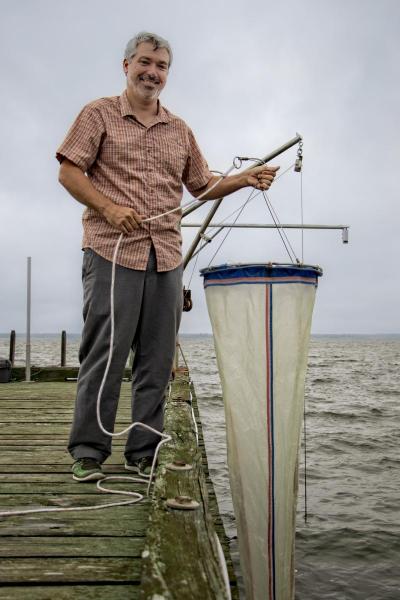 Jamie Pierson
Jamie Pierson
Biological Oceanographer
“I study copepods, one of the smallest multicellular animals in the Chesapeake Bay. They are crustaceans, so they are related to crabs, but they eat mostly algae, or single-celled plants.
Copepod means ‘oar foot’ in Greek. They have appendages that act like oars, like on old rowing ships that have paired oars that move at the same time. Fun fact of the day: the study of copepods goes back to Aristotle, who described a parasitic species.
We drag these nets around and filter many cubic meters of water, and then we condense that down into a jar. On average there are a couple of copepods per liter.
In the lab, we look at their egg production, we look at their grazing rate (how much they are eating), their growth and respiration rate. We’re interested in how those things change with temperature, with food availability, with dissolved oxygen availability, such as in the dead zone in the Bay.
Copepods are right in the middle of the food chain, and that’s why we are interested in what they are doing. You have phytoplankton, which can be measured from space by satellites, at the bottom end. At the top you have fish, which are very important to us.
But the only way you get from phytoplankton to fish—from autotrophs that use sunlight and basic nutrients as the building blocks of life to fish that are economically and ecologically important to us—is through the copepods, because the baby fish and forage fish in the middle eat lots of copepods. That’s how you get from the transfer of the sun’s energy to things that are economically important to us.
The long-term trend suggests that the total amount of copepods available in the Chesapeake Bay has decreased in the last 50 years. It could be because of changes in the types of algae growing due to nutrient inputs or changes in the timing of when the algae peaks.
They could also be affected by how many predators are out there. Jellyfish, larval fish, and forage fish like bay anchovy compete for them. If the conditions are really good for the predators, they can really eat up more of the copepods.”
